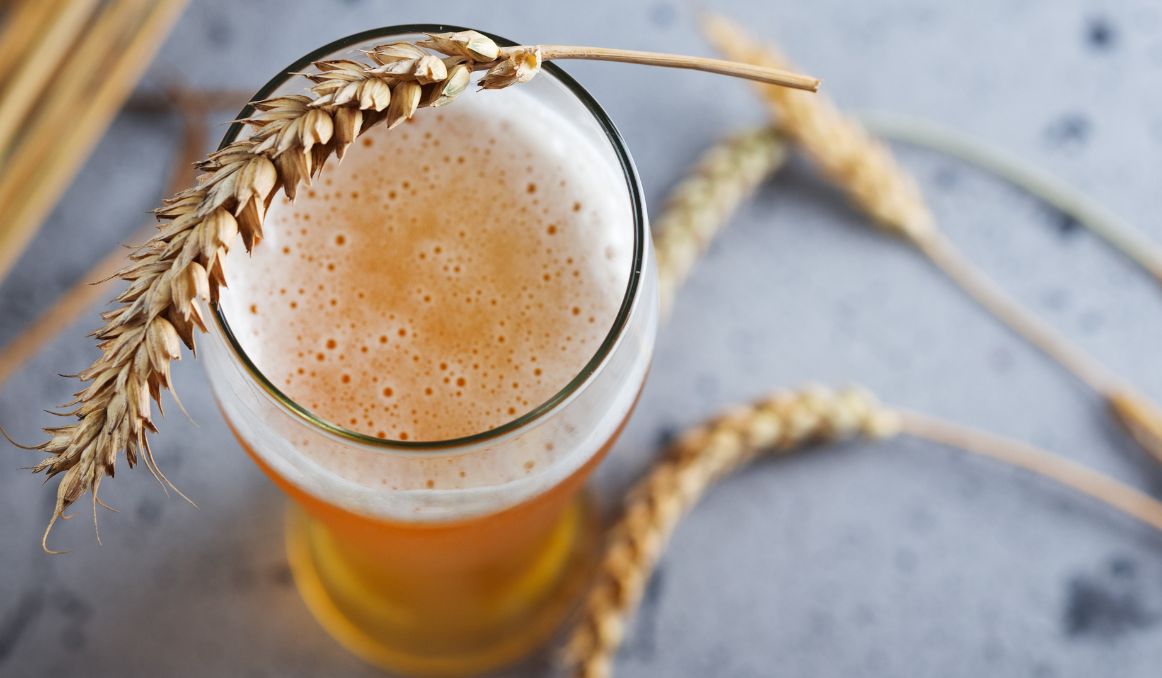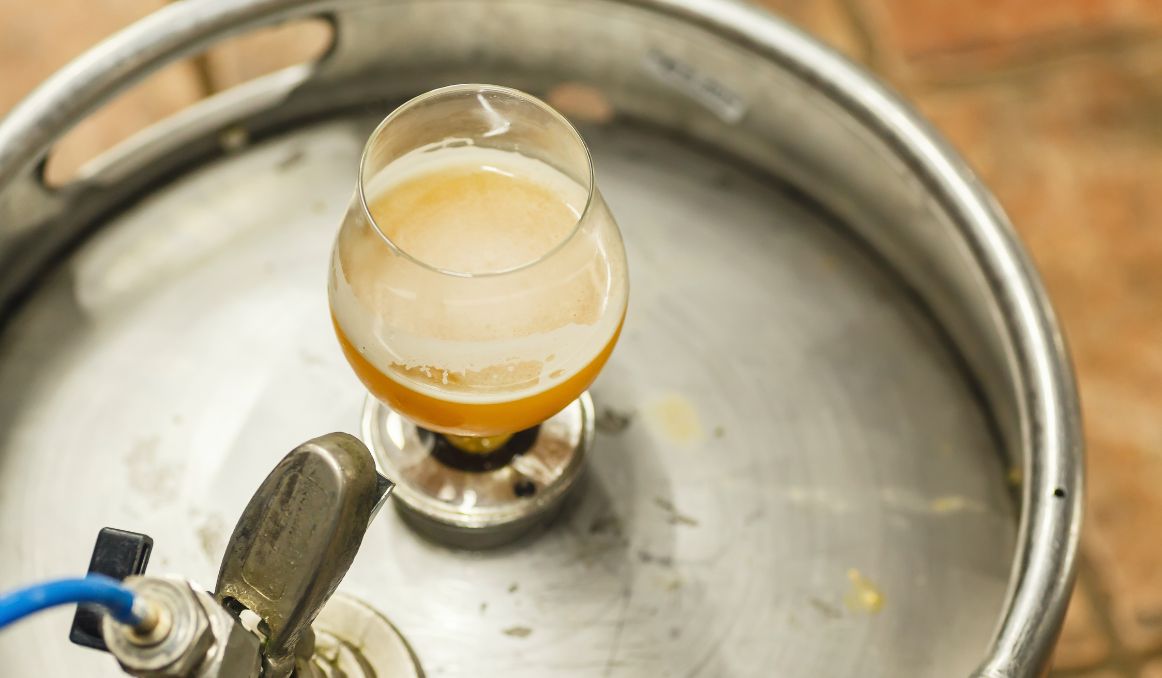Wheat Beer Yeast Strains to Consider
When considering wheat beer yeast strains for brewing, it is a worthwhile undertaking to explore the myriad ways to work with wheat in brewing.
Wheat beer is a wonder on the beer market. Especially as the weather starts to warm up, more people start heading out to local pubs and restaurants to order their first wheat beer of the season.
Wheat is likely as old an ingredient as barley in brewing, as the two were grown as crops around the same time during the agricultural revolution, when humans decided to settle down and become more domesticated.
It is likely that barley took center stage as a beer ingredient over wheat because it provides more sugar than wheat does, particularly when malted, and it is easier to work with in general.
So, while local families may have been willing to grow, harvest, roast, and then brew virtually any grain they had on hand to provide a nutritious and safe beverage for mealtimes, in terms of brewing as a business, barley just made more sense.
Still, wheat beer continued on as a major trend in brewing throughout northern Europe, and particularly in Germany and Belgium well into the modern era from ancient times, with hints of banana and clove common as a result of the wild local yeasts specific to the region.
So why is wheat beer relatively new to the Americas?

The Downsides of Wheat Beer
First of all, the Industrial Revolution of the early 1800s created a supply and demand cycle that simply did not exist prior to mass production and factory work.
The major beer companies cornered the market on all things beer related, including yeast, and began to select for “cleanliness.”
As a result, all beer produced appeared hyper clear so as to appear clean to beer drinkers, which means that brewers began to select for strains that were highly flocculent, pulling virtually all yeast from the beer as the yeast formed clumps toward the end of fermentation.
And what did not flocculate would be filtered out by the brewer before it made its way to the consumer.
Thus, beer drinkers began to demand a clean and clear beer, which is simply not in the cards for wheat beer, which is on the hazier side.
Add to that the fact that American went to war with Germany during World War II and all things German were scuttled to the wayside in the states.
Suddenly, Americans wanted nothing to do with anything even remotely German, not even an excellent beer.
It took decades before an American company thought to innovate and begin working with wheat as a brewing grain.
Thanks to Anchor Brewing in 1984, which took a chance and created a new American wheat beer, Anchor Summer Wheat, we can all head out for our crisp, hazy wheat beers from a variety of brewers today.
The Joy of Wheat Beer
The benefits of brewing wheat beer are many, with flavors and aromas and even textures coming in wildly different from most lagers and ales; it really is in a category all of its own.
Mostly, this distinction is due to the nature of wheat itself not being super sugary or even producing a ton of sugar once roasted, so any yeast you use to ferment will not have a ton of work to do, consuming what sugars do exist and producing alcohol and carbon dioxide in response.
But you will find esters in low amounts that are not typically overwhelming; the same goes for the bread and dough flavors, which should come in low to medium.
And because the yeast ferments in this particular way with wheat, you can expect a bit of what sweetness does exist to remain as yeast will lie dormant in beer once it has fermented to a certain point.
Hops in wheat beer tend to come in low as well, but in a citrusy and floral tone.
What to Know when Brewing Wheat Beer

The biggest thing to note when brewing wheat beer is that you must be patient and take your time with the mash in. Wheat beers should come in at least at 55% wheat malt to get the full effect of wheat beer, and you can even go as high as 70%, balancing your mash in with barley in high quality malt.
Be sure to be mindful of your fermentable sugars in wheat beer as adding too much in, whether sugar or honey can lead to a drier beer, which is not always desirable with wheat beer as it will make the hops more noticeable.
Wheat Beer Yeast
In general, the best yeast to use for wheat beer are non-flocculent strains. The same feature that turned drinkers off wheat beer in the past is the one that draws them in today.
Non flocculent strains of yeast do not clump together either on the surface or the bottom of the vessel. Rather, they suspend in the beer and create a haze that wheat beer drinkers love.
They can be filtered out, of course, but that would defeat the entire purpose of creating a wheat beer in the first place.
And of course, you can always use local, wild yeast for your wheat beer, choosing from yeast strains found close to your wheat crops and experiment accordingly.
Barring that, these yeast strains are popular with brewers looking to create their own batch of wheat beer:
- White Labs – American Hefeweizen (WLP320) or California Ale (WLP001)
- Wyeast – American Ale (1056), American Wheat (1010), or Kolsch (2565)
- Dry Yeast – Safale US-05
Remember to keep your fermentation temps in the mid to high 60s to minimize ester production, and keep your yeast healthy, checking in on it as the fermentation process unfolds.
And don’t forget to have fun experimenting with what works for your own brand of wheat beer.
Cheers!
If you’re interested in finding out how you can use our technology to control fermentation and monitor your yeast, save work hours and improve the cost-efficiency of your business, drop us a line at [email protected] or check out the product pages (for beer or wine):
- Oculyze BB 2.0 (Better Brewing) Yeast Cell Counter App + Hardware
- Oculyze FW (Fermentation Wine) Yeast Cell Counter App + Hardware
Also, you can now get access to a fully functional demo account to test your yeast via our Web App. Completely free of charge and with no commitment to purchase.
Sources:


